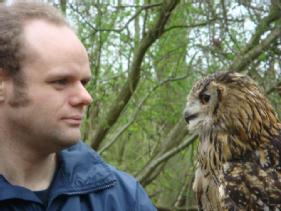Ben Breeze

Contact Details:
Tel: +44(0) 24 7615 0813
email: B.G.Breeze@warwick.ac.uk
Project Outline
Most Electron Paramagnetic Resonance (EPR) spectra are performed in the linear slow scan regime. This means that the signal response is not sensitive to the spin relaxation times and the strength is a quantitative measure of spin concentration, so long as the sample is not suffering from power saturation. There are also pulsed experiments in which very short, intense pulses of microwaves are used to cause large changes in the orientation of the net magnetisation vector and produce responses that are extremely dependant on the relaxation times. In between these two option there is Rapid Scan EPR (RS-EPR). This is performed by scanning either the field or frequency at rates that are fast compared to the relaxation time of the sample. This produces a response that is dependent on the relaxation time of the sample.
Many high purity technologically interesting materials Including SiC and diamond we encounter paramagnetic systems that are magnetically dilute, these have very long relaxation times often in the ms range. These materials are the potential building blocks of quantum computers and as such there understanding is of great importance. The long relaxation times mean the systems can easily become saturated making study with conventional EPR difficult. RS-EPR offers the possibility of enhancing the detection limits for these systems by up to a factor of 10^6.
This project will involve the use of multi-frequency EPR to study the physics of relaxation mechanisms of potentially useful paramagnetic centres in diamond and other wide band gap semi conductions.
The project will also focus on the development of RS-EPR technology to aid in the study of these defects. One method for investigating the relaxation mechanisms is applying stress to the diamond lattice. To perform this I will colaborate in the construction of a probe that can deliver insitu uni-axial stress.
Previous Experiance
I studied for my degree at Nottingham Trent University and the Open University as part of their 2 & 2 programme and I achieved a first class degree. My final year project was a study of simple systems that display chaotic behaviour which allowed me to both study the theory but to test it experimentally.
Prior to this I had spent twelve years working in various industries including working for a electronics design company who specialised in innovative electronics, where I was involved with 3D Modelling and testing of the products. Before this I had been running my own company manufacturing promotional items of all kinds.